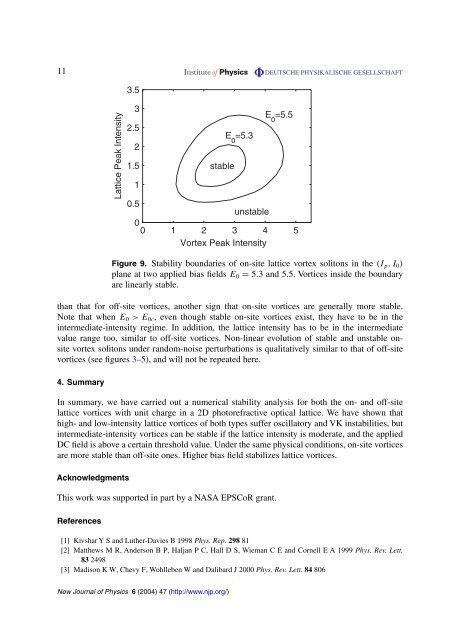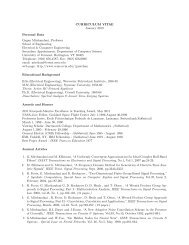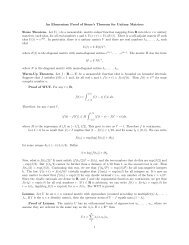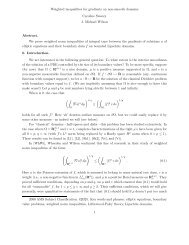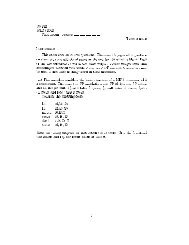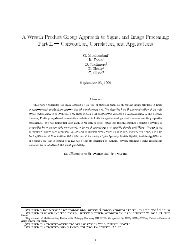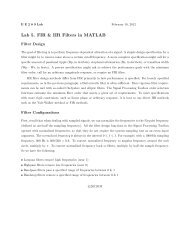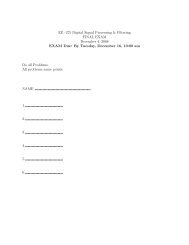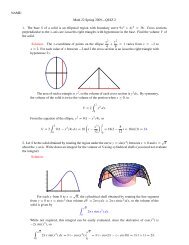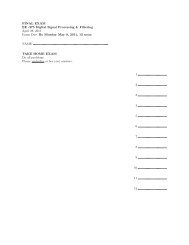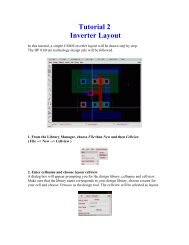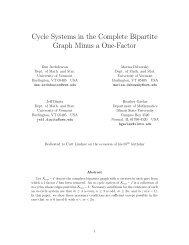Stability of vortex solitons in a photorefractive optical lattice
Stability of vortex solitons in a photorefractive optical lattice
Stability of vortex solitons in a photorefractive optical lattice
Create successful ePaper yourself
Turn your PDF publications into a flip-book with our unique Google optimized e-Paper software.
11 DEUTSCHE PHYSIKALISCHE GESELLSCHAFTLattice Peak Intensity3.532.521.51stableE 0=5.3E 0=5.50.5unstable00 1 2 3 4 5Vortex Peak IntensityFigure 9. <strong>Stability</strong> boundaries <strong>of</strong> on-site <strong>lattice</strong> <strong>vortex</strong> <strong>solitons</strong> <strong>in</strong> the (I p ,I 0 )plane at two applied bias fields E 0 = 5.3 and 5.5. Vortices <strong>in</strong>side the boundaryare l<strong>in</strong>early stable.than that for <strong>of</strong>f-site vortices, another sign that on-site vortices are generally more stable.Note that when E 0 >E 0c , even though stable on-site vortices exist, they have to be <strong>in</strong> the<strong>in</strong>termediate-<strong>in</strong>tensity regime. In addition, the <strong>lattice</strong> <strong>in</strong>tensity has to be <strong>in</strong> the <strong>in</strong>termediatevalue range too, similar to <strong>of</strong>f-site vortices. Non-l<strong>in</strong>ear evolution <strong>of</strong> stable and unstable onsite<strong>vortex</strong> <strong>solitons</strong> under random-noise perturbations is qualitatively similar to that <strong>of</strong> <strong>of</strong>f-sitevortices (see figures 3–5), and will not be repeated here.4. SummaryIn summary, we have carried out a numerical stability analysis for both the on- and <strong>of</strong>f-site<strong>lattice</strong> vortices with unit charge <strong>in</strong> a 2D <strong>photorefractive</strong> <strong>optical</strong> <strong>lattice</strong>. We have shown thathigh- and low-<strong>in</strong>tensity <strong>lattice</strong> vortices <strong>of</strong> both types suffer oscillatory and VK <strong>in</strong>stabilities, but<strong>in</strong>termediate-<strong>in</strong>tensity vortices can be stable if the <strong>lattice</strong> <strong>in</strong>tensity is moderate, and the appliedDC field is above a certa<strong>in</strong> threshold value. Under the same physical conditions, on-site vorticesare more stable than <strong>of</strong>f-site ones. Higher bias field stabilizes <strong>lattice</strong> vortices.AcknowledgmentsThis work was supported <strong>in</strong> part by a NASA EPSCoR grant.References[1] Kivshar Y S and Luther-Davies B 1998 Phys. Rep. 298 81[2] Matthews M R, Anderson B P, Haljan P C, Hall D S, Wieman C E and Cornell E A 1999 Phys. Rev. Lett.83 2498[3] Madison K W, Chevy F, Wohlleben W and Dalibard J 2000 Phys. Rev. Lett. 84 806New Journal <strong>of</strong> Physics 6 (2004) 47 (http://www.njp.org/)


